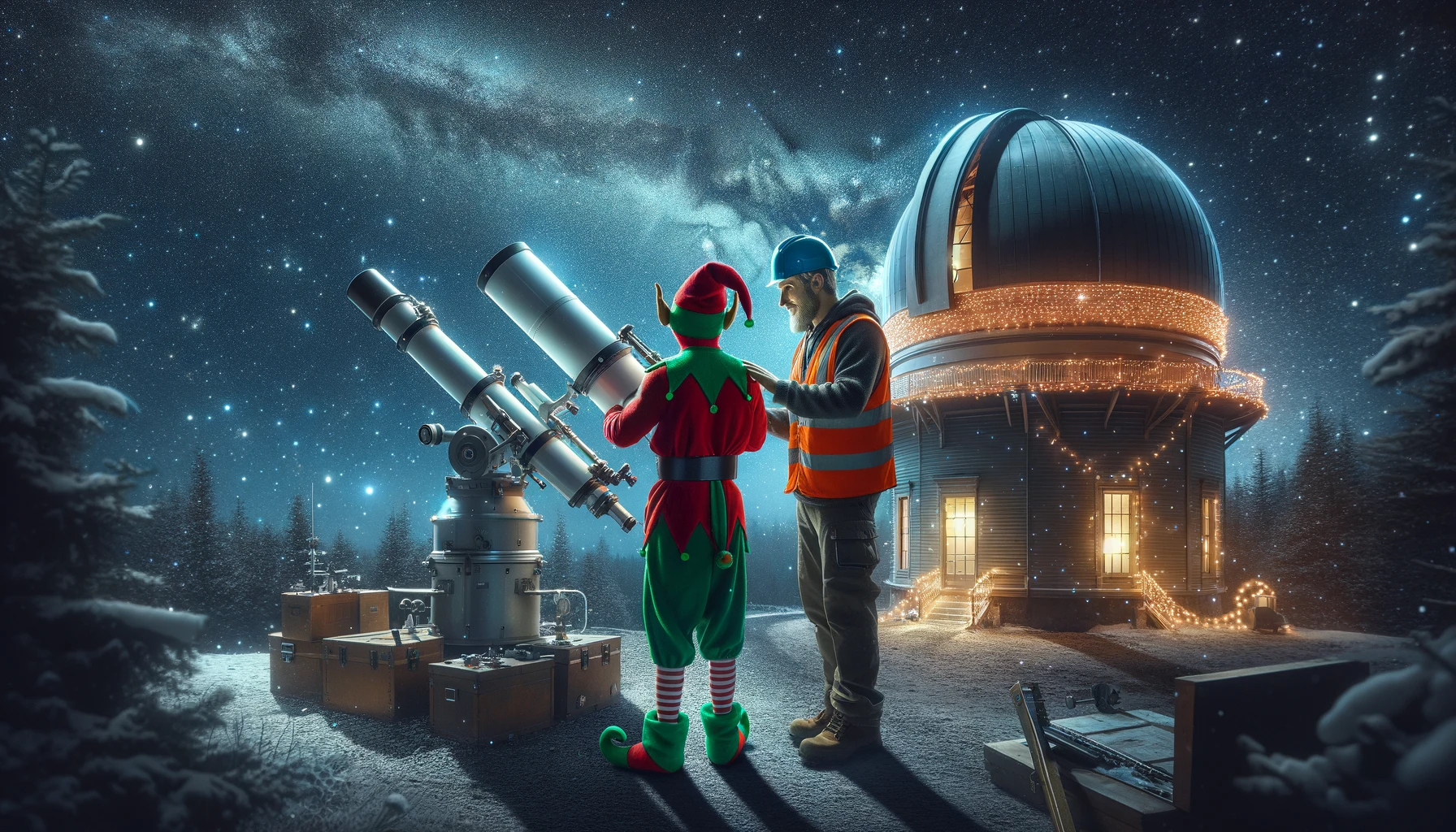After yesterday, I was hoping for an easier puzzle, and we got an easier puzzle.
I guess we’ve given up looking for the mysterious Robo-Elf from yesterday’s puzzle. That maze of metal pipes was made more for a Mario-type than a repair person-type, like yourself. Thankfully, today you come across a more traditional elf. Striped stocking: check. Pointy ears: check. Impractical curly shoes? Check and check. It’s an elf, and like all elves, this one really needs your help. He’s the official astronomer for Santa, and he needs your help with some cosmology.
“Consider the galaxies,” says the elf. “They are all equally distant from us on Earth, but different distances from each other, as is plain to see. However, where the sky is particularly empty, they are even further apart.”
Elves and science. They just don’t mix. But you humor the elf and go along with his calculations. He hands you a star map with all the galaxies of interest arranged in a grid, and he wants you to calculate the Manhattan distance between every pair of galaxies, and then sum them up. But, every empty row or column in the path between the two galaxies doubles the normal measurement. In part two, the distance is a million times longer. (This is the only difference between parts 1 and 2.)
Reading and processing the grid:
from itertools import combinations
def read_data() -> list:
with open("puzzle11.dat") as f:
return f.read().splitlines()
# make a list of the x,y coordinates of every '#' in the grid
def find_galaxies(grid: list) -> list:
return [(x, y) for y, row in enumerate(grid) for x, galaxy in enumerate(row) if galaxy == '#']
# find the 'x' values for every column in grid consisting entirely of '.'
def find_empty_columns(grid: list) -> list:
return [x for x in range(len(grid[0])) if all([row[x] == '.' for row in grid])]
# find the 'y' values for every row in grid consisting entirely of '.'
def find_empty_rows(grid: list) -> list:
return [y for y, row in enumerate(grid) if all([galaxy == '.' for galaxy in row])]Python has a generator for taking every combination of elements in a list, so that comes first. Followed by our standard function to read the puzzle data, a function to return a list of the coordinates of every galaxy, empty column, and empty row.
# find the manhattan distance between two points
def manhattan_distance(p1: tuple, p2: tuple, empty_rows: list, empty_cols: list, multiplier:int) -> int:
minx, maxx = min(p1[0], p2[0]), max(p1[0], p2[0])
miny, maxy = min(p1[1], p2[1]), max(p1[1], p2[1])
temp = (maxx - minx) + (maxy - miny)
# for every empty row between the two points, add multiplier to the distance
temp += multiplier * len([y for y in empty_rows if y > miny and y < maxy])
# for every empty column between the two points, add multiplier to the distance
temp += multiplier * len([x for x in empty_cols if x > minx and x < maxx])
return tempThe Manhattan distance is the sum of the absolute values of the difference between the x and y coordinates. I add the multiplier (1 or 999,999) to the distance for each empty row and column between those coordinates, and that’s the answer.
def parts_is_parts(multiplier:int = 2):
grid = read_data()
galaxies = find_galaxies(grid)
empty_cols = find_empty_columns(grid)
empty_rows = find_empty_rows(grid)
# sum of all the manhattan distances between every pair of galaxies
return sum([manhattan_distance(g1, g2, empty_rows, empty_cols, multiplier-1) for g1, g2 in combinations(galaxies, 2)])
print ("Part 1:", parts_is_parts())
print ("Part 2:", parts_is_parts(1000000))parts_is_parts sums up all the expanded Manhattan distances to provide the answer, and finally, the actual call to get those sums given the multiplier. Part 1 doesn’t send one, so it uses the default value of 2.
That’s it. Day 11 done. Have a great day!





